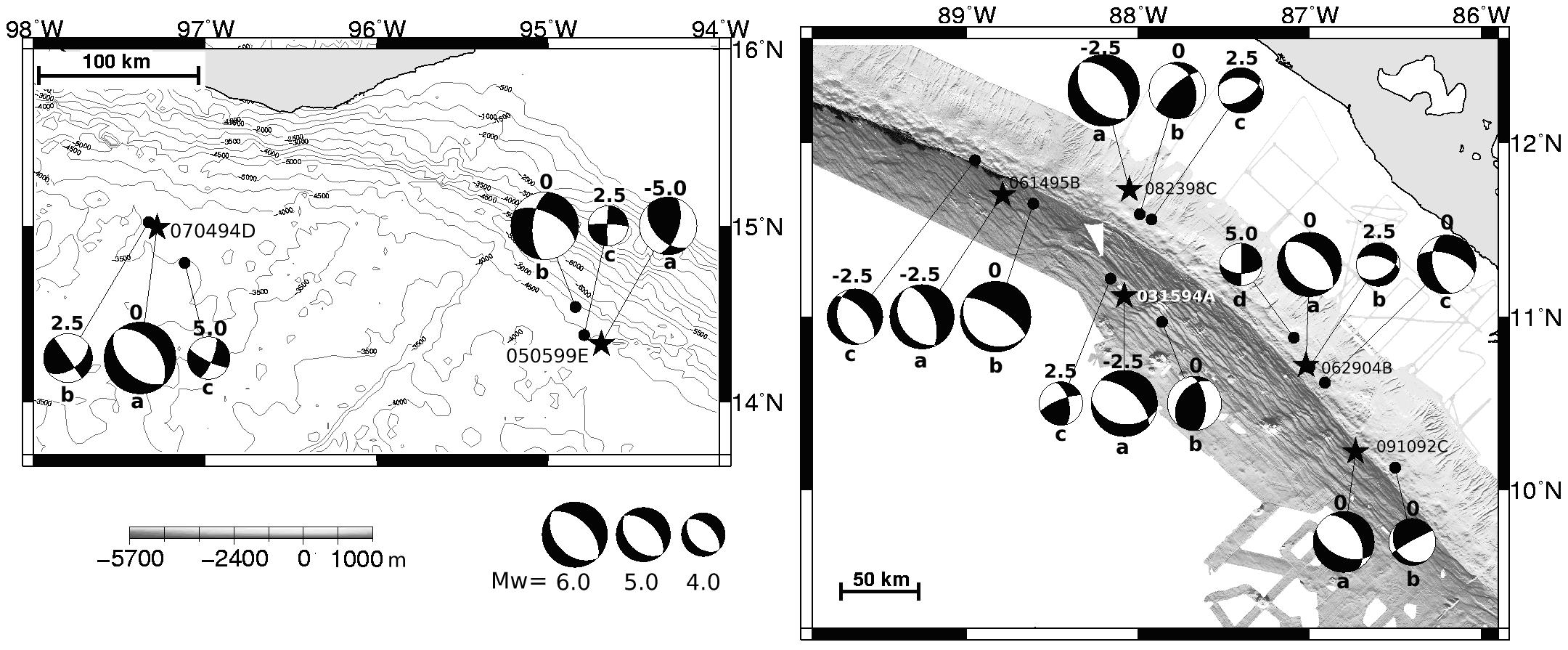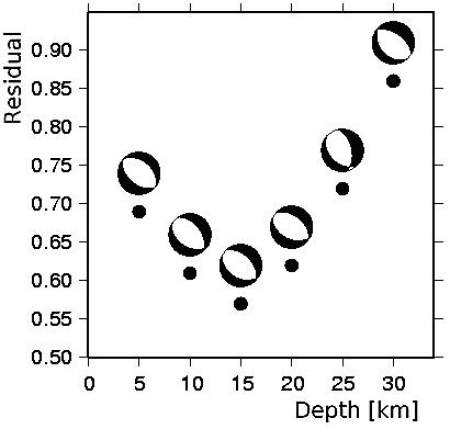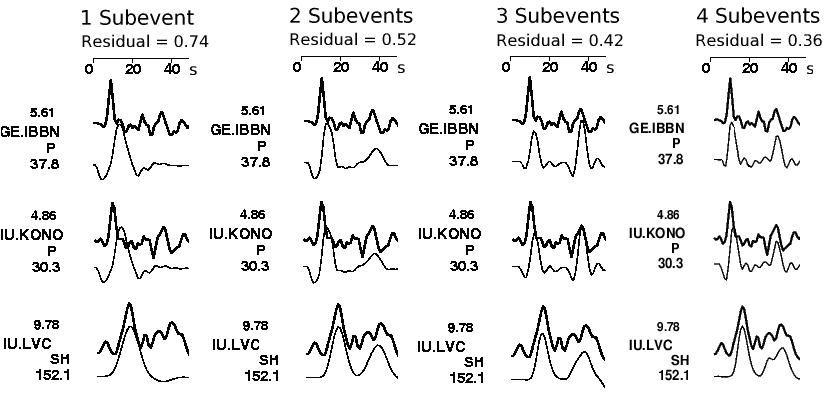 Web Content Display Web Content Display
Teleseismic trench-outer rise earthquakesTrench-outer rise earthquakes occur by reactivation or creation of normal faults caused as the oceanic lithosphere approaches a subduction zone and bends into the deep-sea trench. These faults may cut deep enough into the mantle to allow seawater to penetrate into the lithosphere, causing serpentinization. The amount of water carried into the mantle is linked to the maximum depth that tensional faults cut into the lithosphere, which in turn is directly linked to the maximum focal depths of outer rise normal faulting earthquakes. Chapple and Forsyth (Earthquakes and bending plates at trenches, J. Geophys. Res. 84, 6729-6749, 1979) proposed a model in which outer rise earthquakes are a consequence of plate flexure, while the lithosphere is bent into the trench. Their model suggests that the uppermost lithosphere behaves as a thin elastic plate and that downward flexure at the subduction zone leads to a tensional regime at the top of the plate, grading into a compressional regime at the bottom. Global compilations of earthquake mechanisms based on waveform inversion support this model, as normal faulting events characterise the uppermost 25 km of the incoming lithosphere while thrust faulting and hence compressional fault behaviour occurs at greater depth. Within SFB574 subproject A5 we studied seven outer rise events with Mw>5.5 that occurred between 1992 and 2004 at the Middle America trench (Fig. A5-6). All events have been relocated using travel time pick data from the NEIC/PDE catalogue. Centroid depth, focal mechanism, and rupture behaviour were determined from inversion of body waves using broadband data. To determine focal mechanisms, we used a time-domain iterative inversion method developed by Kikuchi and Kanamori that allows mechanism changes during the rupture sequence. Focal mechanism solutions, like Global CMT, are often based on the simplification that a rupture process can be considered as a single point source. This approach allows determining the overall fault mechanism, but may fail to reveal more complex rupture behaviour. For complex rupture and slip distribution it is more appropriate to describe the source process as a sequence of point sources (subevents), each specified by a moment tensor and its onset time and location. For all trench-outer rise normal faulting events studied, centroid depths from the waveform inversion show that all events occur at shallow depths, most of them occur at depth below ~20 km (Fig. A5-7). Furthermore, the locations of the subevents relative to each other suggest that fault planes for Mw~6 are in the order of 50 km in length and only 5-10 km in width. The rupture process itself is characterized by a number of subevents (Fig. A5-8); a change of the focal mechanism with time from normal fault to strike-slip was observed, provided that the rupture moved unambiguous downdip (Fig. A5-6).
Fig. A5-7: Best fitting centroid depth for overall rupture mechanism of all seven earthquakes studied (Mw=5.5-6.7) suggest that trench-outer rise normal faulting events offshore of Central America occur in the crust and shallow mantle (<20-30 km). Example shows best fit focal mechanism and centroid depth of event 062904B. This is best explained by a change of the stress field in the lithosphere, which might present the intersection between the upper, tensional and the lower, compressional area. The intersection is located approximately 8 km to 14 km below the Moho, roughly where reflectivity pattern interpreted as faults disappear at depth. Thus, large normal fault events that rupture the outer rise may provide pathways for seawater to penetrate the mantle. A compressional regime at depth, however, could present a barrier for percolation of seawater. In consequence thrust faulting may occur at greater depth than any depth derived for the earthquakes in this study, but those fault may remain dry. Results are published by Lefeldt and Grevemeyer (Centroid depth and mechanism of trench-outer rise earthquakes, Geophys. J. Int., doi: 10.1111/j.1365-246X.2007.03616.x, 2008).
Fig. A5-8: Observed waveforms show a number of features that could best be explained by complex rupture and a number of subevents (Lefeldt and Grevemeyer, 2007). |
 Events Events
Kieler Wissenschaftler fühlen den 'Puls der Erde' Wie funktioniert die Recyclingmaschine der Erde?Nach elf Jahren endet der Kieler Sonderforschungsbereich 574 zu Subduktionszonen Final colloquium of SFB 574 Teilprojekt ÖffentlichkeitsarbeitMEERESFORSCHUNG FÜR MICH UND DICH |
|
©SFB574 // Wischhofstrasse 1-3 // D-24148 Kiel // T. +49 (0)431 600 1413 // elange [AT] geomar.de








